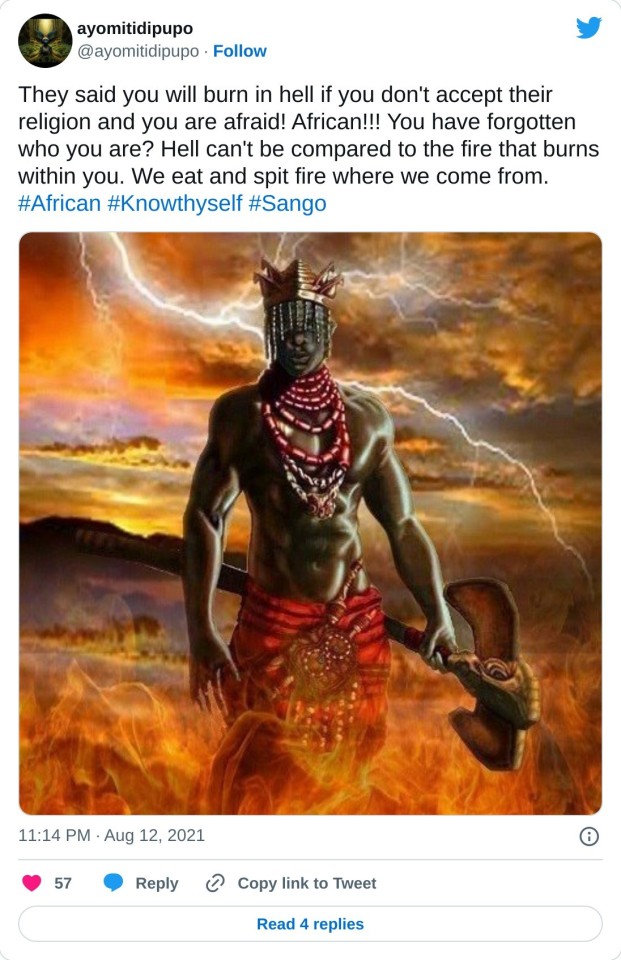#Shango
Text
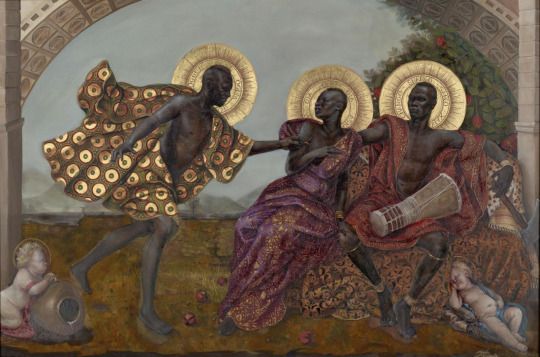
Oya’s Betrayal
Oya’s Betrayal tells a Yoruba tale, a patakí, about a relationship between orishas Ogun, Oya, and Shango in a Renaissance style. Harmonia Rosales was inspired by artistic depictions of the Roman myth of Vulcan, Venus, and Mars.
Harmonia Rosales
190 notes
·
View notes
Photo

Shango/Xango by Nelson Boeira Faedrich
454 notes
·
View notes
Text

Iemanjá (also spelled Yemayá. Yemoja, Iemoja, or Yemaya) is one of the most powerful orishas. She is the mother of all living things, rules over motherhood and owns all the waters of the Earth. She gave birth to the stars, the moon, the sun and most of the orishas. Yemaya makes her residence in life-giving portion of the ocean (although some of her roads can be found in lagoons or lakes in the forest). Yemaya’s aché is nurturing, protective and fruitful. Yemaya is just as much a loving mother orisha as she is a fierce warrior that kills anyone who threatens her children.
Yemaya can be found in all the waters of the world, and because of this she has many aspects of “caminos” (roads), each reflecting the nature of different bodies of water. She, like Oshún, carries all of the experiences of womanhood within her caminos. Contrary to popular belief she is not just a loving mother. Some of Yemaya’s caminos are fierce warriors who fight with sabers or machetes and bathe in the blood of fallen enemies. Other roads are masterful diviners that have been through marriage, divorce and back again. Some roads of Yemaya have been rape survivors, while other roads betrayed her sisters out of jealousy and spite. No matter what camino of Yemaya, all are powerful female orishas and fiercely protective mothers.
Yemaya has a very special relationship with two orishas in particular: Oshún and Chango. Oshún is often depicted as Yemaya’s sister, and Yemaya allows Oshún to take residence in her rivers. Yemaya and Oshun relate to one another like typical sisters; they love each other and also have a bit of sibling rivalry. Chango and Yemaya are inseparable. Some followers of Santeria say Yemaya is Chango’s mother. The two of them eat together and Chango shares his wealth with Yemaya. Yemaya helped mold Chango into the wise leader he was meant to be from birth (although he initially lacked the skill to rule with grace).
You can find me at: Instagram / Pinterest / Marketplace
#Iemanjá#iemanja#yemayá#yemanjá#umbanda#candomblé#santeria#artists on tumblr#black art#black tumblr#orishas#orixás#shango#xangô#oxum#osun#osùn#support black creators#support black business#support black people#odoyá#encontro ancestral
183 notes
·
View notes
Text


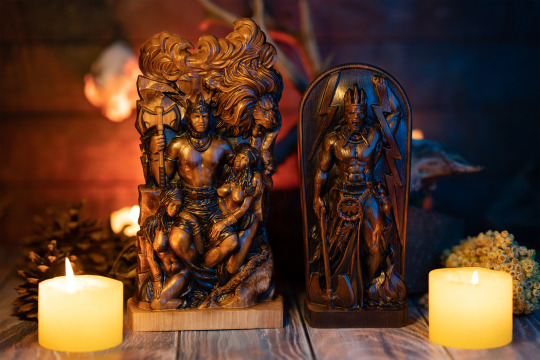

Shango is an Orisha, a deity in Yoruba religion. Genealogically speaking, Shango is a royal ancestor of the Yoruba. The ancestral Shango was the fourth king of the town of Oyo. I tried to portray him in all royal grandeur, sitting on a throne decorated with the skin of a royal lion and surrounded by the attention of women.
The natural forces associated with Shango are fire and lightning. His most prominent ritual symbol is the oshe, a double-headed battle-ax.
this and other figurines in my Etsy store
74 notes
·
View notes
Text

Xangô & Oshun by Kypris Aquarelas
Prints available here at society6!
#orisa#orixas#orixás#orisha#orishas#watercolor#watercolour#watercolours#aquarela#umbanda#candomblé#oshun#oxum#osun#xangô#xango#shango#chango#dandalunda#nzazi#zazi#paganism#polytheism
80 notes
·
View notes
Text

89 notes
·
View notes
Text
Remember even in the darkest times you are never alone
The spirits, your ancestors, and the Orishas themselves walk beside you
With them by your side nothing can block your path for long
Ashe
#Orisha#African powers#Santeria#Ifa#Yoruba#yoruba religion#Ellegua#Obatala#ogun#Shango#Oba#Oya#Yemaya#Oshun#Olokun#Babaluaye#Ashe#Ancestors#400+1#Cuban#Mexican#Protectors#Olodumare#haitian vodou#Loa
71 notes
·
View notes
Text

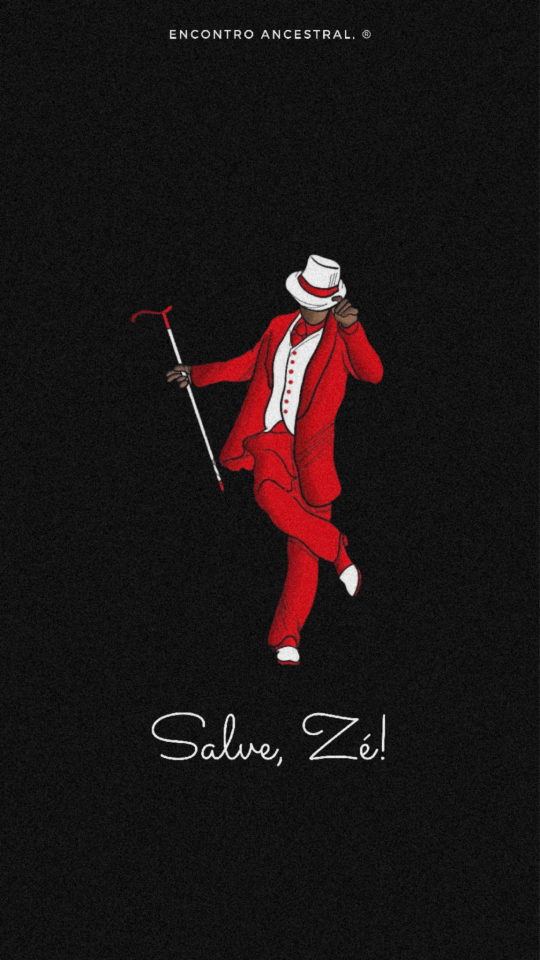

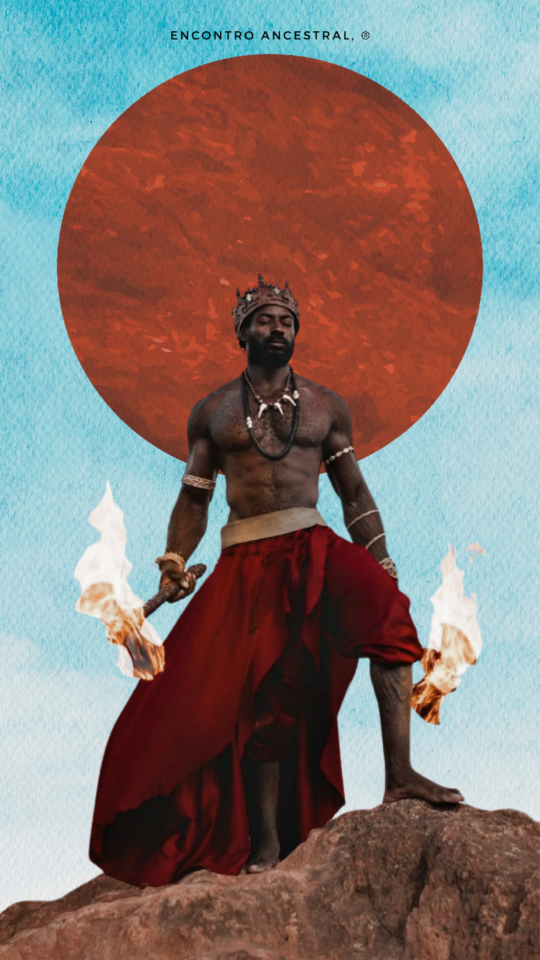
🤍
#bahia#brasil#orisha#santeria#spirituality#umbanda#iemanjá#orixa#orixá#yemoja#shango#xangô#zé pilintra#malandragem#ogum#ogunhê
12 notes
·
View notes
Photo

🌿ORACIÓN PARA TOMAR CUALQUIER HIERBA DE LA NATURALEZA🌿 Ozain te saludo con respeto, solicito tú permiso para tomar parte de tú legado, es para (sanar, tomar, limpiar etc.) Esta hierba (nombre de la planta) en cambio te dejo este derecho (ofrenda) como gratitud de recibir la medicina. Gracias, gracias, gracias padre *Esta oración básicamente pidiendo permiso a conciencia, cualquier persona lo puede realizar #ozain #orishas #eshu #eleggua #oggún #oshun #Yemayá #obatala #shango #oyá #espiritismo #palomonte #Ifá #puebla #loscabos #mexico #chiapas #tlaxcala #guadalajara #españa #chile #perú #estadosunidosdenorteamerica #miami #diloggun https://www.instagram.com/p/CrkBAvgtElu/?igshid=NGJjMDIxMWI=
#ozain#orishas#eshu#eleggua#oggún#oshun#yemayá#obatala#shango#oyá#espiritismo#palomonte#ifá#puebla#loscabos#mexico#chiapas#tlaxcala#guadalajara#españa#chile#perú#estadosunidosdenorteamerica#miami#diloggun
47 notes
·
View notes
Text
#knowledge#love#wisdom#life#spirituality#karmicstar#orisha#yoruba#soul#oya high#sango#chango#shango#papa legba
53 notes
·
View notes
Text

#drawing#axe#xango#shango#umbanda#candomble#yoruba#ioruba#copper#lightning#storm#justice#mythology#africa#african mythology#urban#streetstyle
7 notes
·
View notes
Photo
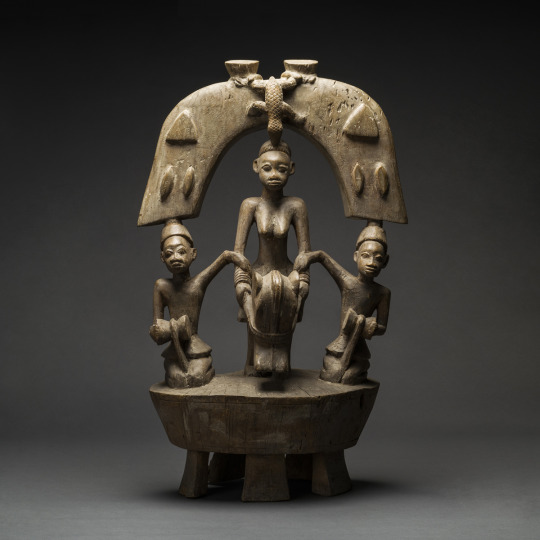
Shango altarpeace, Yoruba
106 notes
·
View notes
Text

Every year, across the country, Brazilians of all faiths gather to celebrate the Candomblé goddess of the sea, Iemanjá. In Salvador, in particular, the festivities are spectacular and draw large crowds, as well as being shown on TV. Read on to get an idea of when and why this goddess is worshipped and how you can get involved.
What Is the Festival?
The festival of Iemanjá (sometimes spelt Yemanjá) takes place in many places all over Brazil. The biggest celebration of it takes place in the Rio Vermelho neighbourhood in Salvador on February 2 every year. During the festivities, followers of the Candomblé religion offer flowers and gifts to their goddess Iemanjá at the sea’s edge and send them out to her in the ocean. Everyone dresses in white, and night-long music and dancing continue after the offerings have been made.
Iemanjá, goddess (or orixá) of the sea, is a central deity in the Candomblé religion. She watches over sailors and fishermen and controls their catches. She is very powerful, and is concerned with every aspect of womanhood, fertility and family; she is also the protector of children. She often is depicted as a mermaid and is always dressed in either white or blue.

#artists on tumblr#black art#black tumblr#support black business#support black creators#support black people#candomblé#orishas#orixás#umbanda#iemanja#yemoja#yemaya#yemayá#festa de iemanjá#oshun#shango#ogum#oxala#Oxóssi#support black artists#support if you can
72 notes
·
View notes
Text
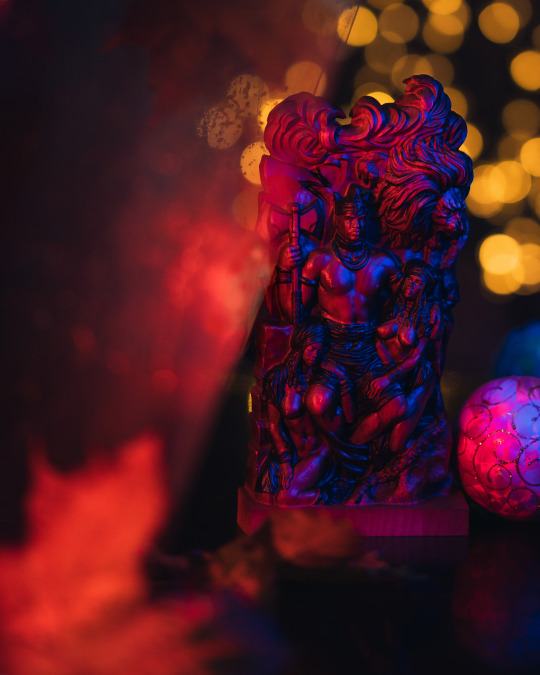

Let me remind you that even though it’s the rainy end of autumn outside, the Christmas and New Year celebrations are already close. Soon all postal and courier services will be overloaded, so take care of gifts for your loved ones in advance.
Shango figurine carved from ash
this and other figurines in my Etsy store
28 notes
·
View notes
Text

Nanã and Shangô by Kypris Aquarelas
Prints available at society6!
______________________________________________________________
Nanã é uma orixá tida como Mãe Antiga, chamada carinhosamente pelos adeptos de religiões de axé como a Avó. Tem conexão com a ancestralidade, os pântanos, os poços, o fundo do lago, a vida e a morte, a saúde, maternidade - a terra, a água, o lodo estão sob seu olhar. Carrega consigo o ibiri, um bastão de hastes de palmeira. Nanã é mãe de orixás como Iroko, Oxumaré e Obaluayê, a quem abandonou devido ter nascido com feridas pelo corpo. Deusa dos mistérios, nas palavras de Serena Assumpção, Nanã Buruquê "nas matas é água benta / nos rios é flecha ligeira", dos seus filhos e filhas se canta que "quem anda com Mamãe, anda bem devagarinho / quem caminha com Mamãe, nunca fica no caminho". Nanã foi sincretizada com Nossa Senhora Sant'Anna no Brasil, uma das suas saudações mais conhecidas é "Saluba, Nanã".
"Quando chega na beira da costa,
salve a Lua, salve o Sol,
Quando chega na beira da costa,
salve Nanã que é nossa Vó!" (Omolu, cordeiro de Nanã - Águas de Aruanda)
Por outro lado, Xangô é rei dos reis, orixá da justiça, do poder, da realeza, dos trovões e do fogo, do calor da lava dos vulcões que são o "corpo vivo de Xangô", segundo Bethânia. Conta-se que Xangô foi um dos mais conhecidos e poderosos alafins de Òyó, antigo e poderoso império da África Ocidental. Xangô carrega seus oxés, machados duplos, tem sua morada terrena nas pedreiras e sua saudação mais conhecida é "Kaô Kabiesilê". No Brasil é sincretizado com São Jerônimo.
"Obá é meu rei
É pai Xangô
É justiceiro Nagô
Kabiesilê
Xangô é rei na cachoeira
Xangô é chefe na pedreira" (Xangô - Serena Assumpção)
#aquarela#watercolor#watercolour#aquarelle#nanã#nanan#xangô#sango#umbanda#candomblé#artwork#art#illustration#ilustração#orixás#orishas#deusa#shango#nanburuque#buruku#painting#pintura#watercolours#arte#pagan#paganism#polytheism
31 notes
·
View notes
